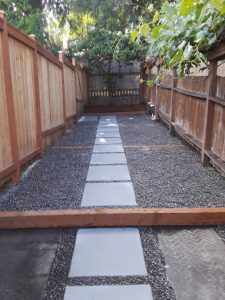Tree Pruning: Keeping Your Trees Healthy and Beautiful
Tree pruning is like giving your tree a haircut—trimming away the dead or overgrown branches to help it stay healthy and strong. Whether you’re dealing with overgrown branches or just want to help your trees thrive, proper pruning is an essential part of yard maintenance. In this guide, I’ll walk you through what tree pruning is, why it’s important, and how to do it right, especially for Seattle’s climate and local trees.
What Is Tree Pruning, Anyway?
Tree pruning involves trimming dead, damaged, or overgrown branches to improve the overall health, safety, and appearance of your tree. Think of it as shaping your tree to allow for better growth and prevent any potential hazards, such as branches falling in a storm. Proper pruning can also encourage the tree to produce more flowers, fruit, or leaves.
Why Should You Prune Your Trees?
Pruning isn’t just about aesthetics; it’s essential for tree health and safety. Here’s why pruning is so important:
- Tree Health: Removing dead or diseased branches helps your tree heal and grow stronger.
- Safety: Overgrown or dead branches can pose a risk, especially in windy weather. Pruning ensures the tree remains stable and avoids any accidents.
- Shaping: Regular pruning keeps your tree’s shape balanced, making it a beautiful addition to your landscape.
- Better Air and Sunlight: By thinning out branches, you allow more light and air to reach the leaves, promoting healthier growth.
Common Trees in Seattle You’ll Want to Prune
Seattle is home to a variety of beautiful trees, many of which require regular pruning. Here are some of the common types you might encounter:
- Bigleaf Maple: These trees can grow large and heavy, so regular pruning is needed to prevent weak branches.
- Douglas Fir: A native evergreen that requires occasional pruning to manage its size and keep it healthy.
- Western Hemlock: This tree benefits from pruning to maintain its structure, especially in areas prone to strong winds.
- Red Alder: Known for fast growth, this tree needs regular pruning to keep its branches strong and healthy.
- Japanese Maple: These delicate trees need careful pruning to maintain their ornamental shape and health.
Best Times to Prune in Seattle
Timing is crucial when it comes to pruning. Here’s a simple guide to when to prune different types of trees:
- Winter (Dormant Season): The best time for most trees, as they’re not actively growing. This allows you to see the structure of the branches clearly without harming the tree.
- Late Spring or Early Summer: Ideal for trees that bloom in spring, like cherry trees. Prune after the tree has finished flowering.
- Avoid Fall: Pruning in fall can encourage new growth, which is too weak to survive the upcoming winter. Wait until the tree is dormant again.
Tools of the Trade
Before you get started, you’ll need the right tools to make pruning easy and effective:
- Hand Pruners: For small branches (up to 1/2 inch thick).
- Loppers: Long-handled pruners for larger branches (up to 1-1/2 inches thick).
- Pruning Saw: For branches too thick for loppers.
- Pole Pruner: Great for reaching high branches without needing a ladder.
- Protective Gear: Always wear gloves, goggles, and a helmet for safety—especially when using a ladder.
Best Practices for Tree Pruning
Now that you have the right tools and know when to prune, here are some best practices to ensure you’re doing it right:
- Start with the Dead Stuff: Always begin by removing dead, diseased, or broken branches. This helps the tree heal and prevents further decay.
- Remove Weak Branches: Look for branches growing at sharp angles or crossing over each other. These branches are more likely to break, so prune them away.
- Thin It Out: Remove some of the inner branches to allow sunlight and air to circulate through the tree, helping it stay healthy.
- Shape It Up: Keep the natural shape of the tree in mind. Avoid drastic cuts; the goal is to maintain balance and ensure healthy growth.
- Leave a Collar: When cutting branches, leave a small “collar” of tissue around the cut. This helps the tree heal more efficiently.
Quick Tips for Tree Pruning
- Don’t Top Trees: Avoid cutting off the tops of trees. Topping leads to weak, diseased regrowth and can harm the tree in the long run.
- Prune Regularly: Pruning doesn’t have to be a major event. Regular, light pruning is easier on the tree and can be done more frequently.
- Know When to Call a Pro: If you’re dealing with large or high branches, or if the tree is in a risky location, it’s best to call a professional tree service. Don’t risk injury or damage.
Wrapping Up: Pruning for Healthier, Stronger Trees
Tree pruning might seem like a daunting task, but with the right tools, timing, and techniques, it’s manageable and incredibly beneficial for the health of your trees. Proper pruning will help your trees grow stronger, prevent accidents, and enhance the beauty of your landscape. And if you ever need a hand with pruning, give me a call—I’m always here to help!
Summary Notes:
- Pruning is the process of trimming dead or overgrown branches to improve tree health.
- Common Trees in Seattle: Bigleaf Maple, Douglas Fir, Western Hemlock, Red Alder, Japanese Maple.
- Best Pruning Times: Winter for most trees; spring for flowering trees; avoid fall.
- Tools: Hand pruners, loppers, pruning saw, pole pruner, protective gear.
- Best Practices: Start with dead branches, thin out the tree, and keep its natural shape.



















